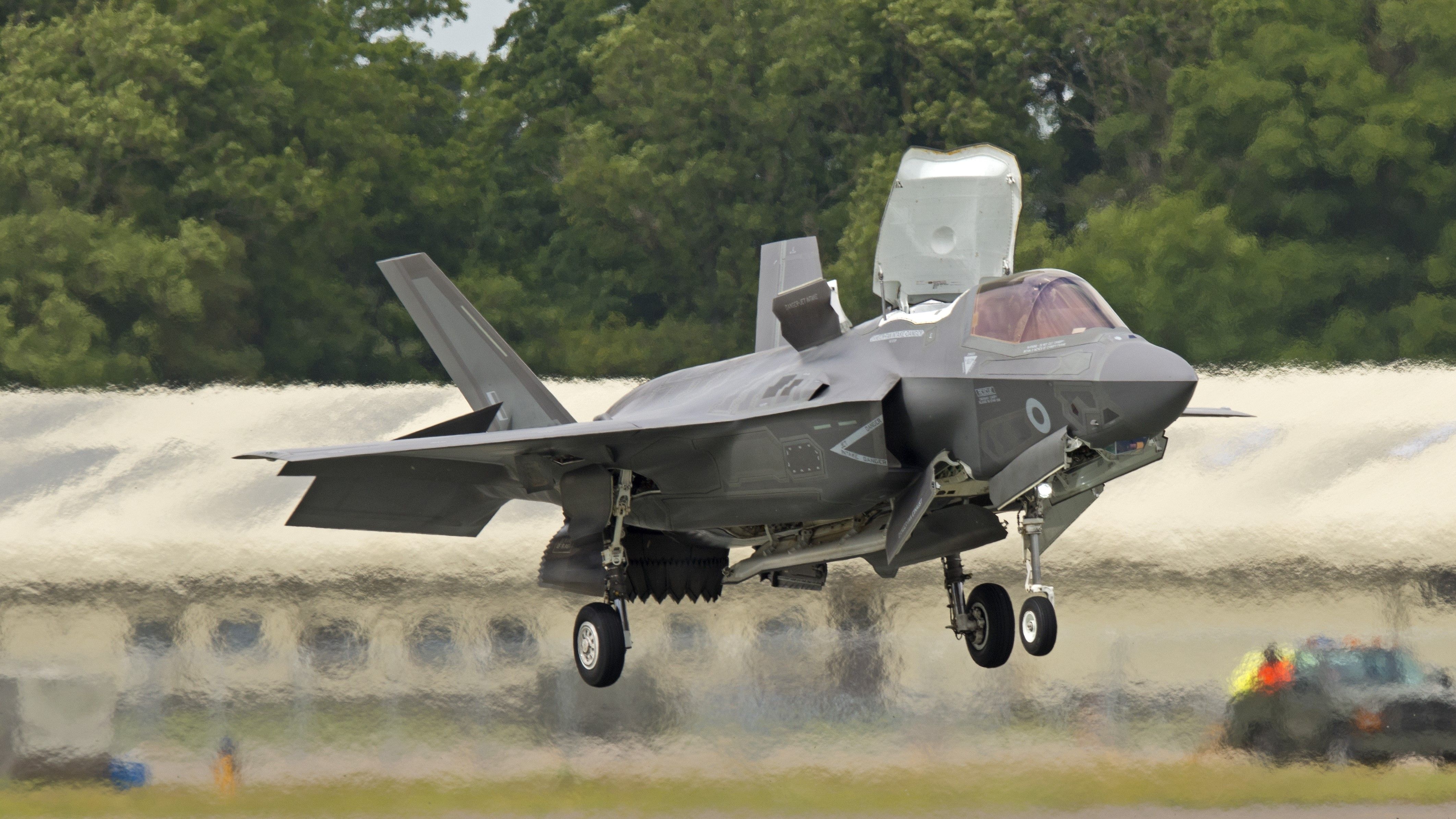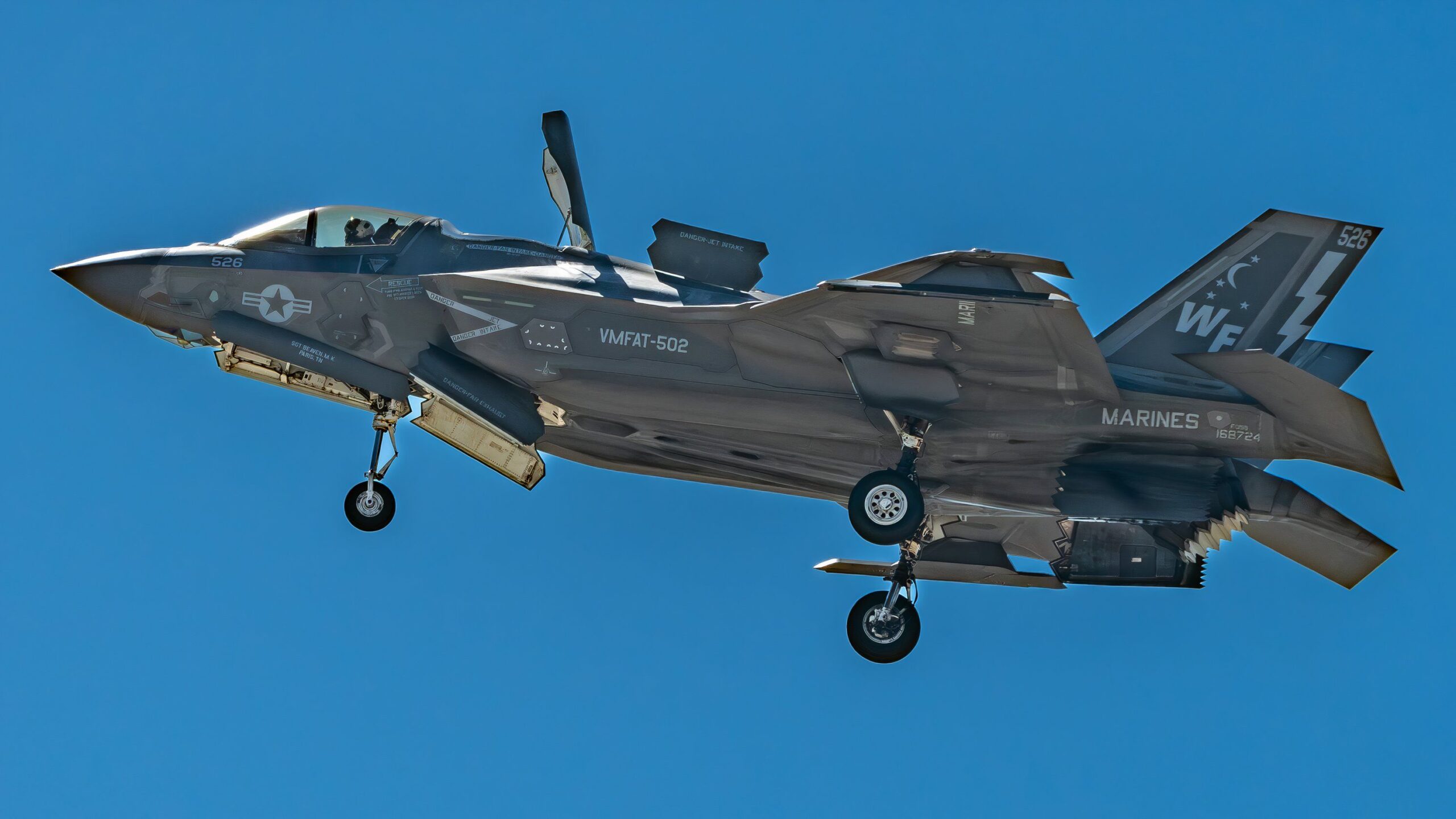Summary
- F-35B crash in Albuquerque involved new Technology Refresh 2 upgrade, but pilot ejected safely with Martin-Baker US16E Seat.
- Aviation enthusiast captured photos of F-35B crash after failed short takeoff using lift fan at Kirtland Air Force Base.
- Lockheed Martin reports that F-35B was heading to Edwards AFB for additional test equipment modification and says it is prioritizing safety.
In an incident that thankfully did not have loss of life, a F-35B Lightning II stealth jump jet equipped with the important and delayed Technology Refresh 2 upgrade. The F-35B was flown by a Defense Contract Management Agency pilot who is thankfully medically stable as of late May 29.
A test F-35B crashes in Albuquerque
On May 28, a Lockheed Martin F-35B Lightning II (aka Panther) made a stop at Albuquerque International Airport’s Kirtland Air Force Base for refueling. However, as per the below air traffic control audio, the pilot wanted to do a short take-off from the airport:
Sadly, the short take-off attempt using the F-35B’s lift fan did not succeed. One can watch the incident thanks to The Aviationist and Alex McCready:
All reports are that the pilot is on a path to recovery, partially thanks to the F-35B’s Martin-Baker US16E Seat:
According to Martin-Baker, the US16Es fitted to the F-35Bs have an auto ejection system. As of late May 29, it was unconfirmed whether the ejection system was pilot-activated or seat-activated. The ejection seat is based on the Mk16 range of Martin-Baker ejection seats used on the T-6 Texan II, Eurofighter Typhoon, NASA T-38N and USAF T-38.
About the F-35B variant
The F-35B variant of the F-35 is the Short Take-Off and Vertical Landing (STOVL) variant. As such, the F-35B is intended to take off using a lift fan to shorten the distance and land vertically from small aircraft carriers and short airfields. Additionally, the F-35B in the words of Lockheed Martin’s product card is,
“The first-ever supersonic, radar-evading stealth aircraft with short takeoff/ vertical landing (STOVL) capability, giving it the unique capability to operate from a variety of ships, roads and austere bases near frontline combat zones.”
Hence the combination of stealth technology and unique propulsion technology on the F-35B. One can read more about the F-35 from the product cards below:
Additionally, one can read the Simple Flying guide below into the F-35B’s unique flying capabilities:

Related
Examined: The Lockheed Martin F-35B Lightning II’s Short Takeoff & Vertical Landing Capabilities
This military jet was the first one to match supersonic speeds with STOVL capabilities.
The F-35B is not just a stealth STOVL supersonic aircraft; the F-35B is also a sensor, sharer, and shooter, as the US Marine Corps would say. Why? The F-35B has multiple sensors to detect potential threats and targets, the F-35B can share its findings with other allied aircraft and the F-35B carries substantial firepower.
Lockheed Martin statements on the incident and TR-3
Additionally, Lockheed Martin issued the following statement on the incident,
“An F-35B en route from Fort Worth, Texas, to Edwards Air Force Base, California, crashed after a refueling stop at Kirtland Air Force Base, New Mexico. This was a U.S. Government-owned and operated aircraft that was being flown by a government pilot who safely ejected. The aircraft was a test jet equipped with Technology Refresh 2 (TR-2) and was transferring to Edwards AFB for additional test equipment modification. Safety is our priority, and we will follow appropriate investigation protocols.“
One should note that the F-35 is a continuously improving product. For instance, the TR-2 is about to be supplanted by TR-3. According to a Lockheed Martin spokeswoman,
“Progress to date supports our expected timeline of delivering the first TR-3 combat training-capable aircraft in the third quarter. TR-3 introduces open mission systems architecture, a new integrated core processor with greater computing power, an enhanced panoramic cockpit display, a larger memory unit and other classified capabilities.“
As previously covered by Simple Flying, some of the issues around the TR-3 are delaying production. Finally, below is the Lockheed Martin May 1 update on the F-35 program overall for your reference:
We here at Simple Flying sincerely wish for the full recovery and return to flight of the pilot involved in this incident.
What are your concerns and thoughts for the F-35? Please share with civility in the comments.

